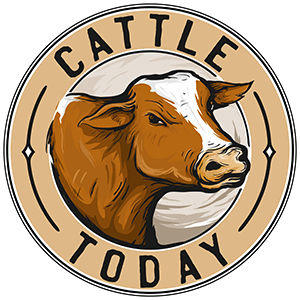Cattle Rack Rancher
Well-known member
Scientists Create Genetic Map of Cattle
WASHINGTON, Oct 06, 2004 (AP Online via COMTEX) -- For the first time, scientists have created a genetic map of a cow, providing researchers a new tool to reduce animal disease and improve the nutrition of beef and dairy products, the Agriculture Department announced Wednesday.
The announcement was a major development in the $53 million international project to sequence the genome of different breeds of cattle.
"Sequencing the bovine genome is a major accomplishment ... in human and agricultural research," Agriculture Undersecretary Joseph Jen said in a statement.
The program, launched last December, was aimed at documenting each of the 3 billion "letters" - or base pairs - of the cattle DNA code, about the same number as found in humans and other mammals.
The initial draft involved genes of the Hereford breed. Gene sequencing of a half dozen other breeds will follow, the department said.
Jen said that the first draft sequence has been put into a free public database, making it accessible to biomedical and agricultural scientists around the world.
"The bovine genome sequence will serve as a tool for agricultural researchers striving to improve health and disease management of cattle and enhance the nutritional value of beef and dairy products," the USDA statement said.
Scientists believe that by identifying and better understanding the function of genes in cattle, researchers will be able to track the genetic makeup of the animals and breed cattle that are more disease resistant while using fewer antibiotics. That will increase the safety of the food supply, said the department.
The gene tracking also will help cattle breeders discover traits that will allow for better meat and milk products, the USDA said.
The research was carried out by a team at the Baylor College of Medicine's Human Genome Sequencing Center in Houston, Texas.
Additional work to develop more detailed information about individual cattle genes, is being conducted at the British Columbia Cancer Research Center in Vancouver, Canada, the USDA said.
The Baylor team was led by Richard Gibbs, a pioneer in genetic research, who also participated in the first mapping of the human genetic code. Last March, Gibbs and other scientists at the Baylor center completed the genetic mapping of a Norwegian brown rat, a development also viewed as important in research into human disease.
About half of the funding for the project, $25 million, was from the National Human Genome Research Institute, part of the National Institutes of Health. The USDA contributed $11 million and the state of Texas $10 million. Additional support came from organizations in Texas, South Dakota, Canada, Australia and New Zealand.
WASHINGTON, Oct 06, 2004 (AP Online via COMTEX) -- For the first time, scientists have created a genetic map of a cow, providing researchers a new tool to reduce animal disease and improve the nutrition of beef and dairy products, the Agriculture Department announced Wednesday.
The announcement was a major development in the $53 million international project to sequence the genome of different breeds of cattle.
"Sequencing the bovine genome is a major accomplishment ... in human and agricultural research," Agriculture Undersecretary Joseph Jen said in a statement.
The program, launched last December, was aimed at documenting each of the 3 billion "letters" - or base pairs - of the cattle DNA code, about the same number as found in humans and other mammals.
The initial draft involved genes of the Hereford breed. Gene sequencing of a half dozen other breeds will follow, the department said.
Jen said that the first draft sequence has been put into a free public database, making it accessible to biomedical and agricultural scientists around the world.
"The bovine genome sequence will serve as a tool for agricultural researchers striving to improve health and disease management of cattle and enhance the nutritional value of beef and dairy products," the USDA statement said.
Scientists believe that by identifying and better understanding the function of genes in cattle, researchers will be able to track the genetic makeup of the animals and breed cattle that are more disease resistant while using fewer antibiotics. That will increase the safety of the food supply, said the department.
The gene tracking also will help cattle breeders discover traits that will allow for better meat and milk products, the USDA said.
The research was carried out by a team at the Baylor College of Medicine's Human Genome Sequencing Center in Houston, Texas.
Additional work to develop more detailed information about individual cattle genes, is being conducted at the British Columbia Cancer Research Center in Vancouver, Canada, the USDA said.
The Baylor team was led by Richard Gibbs, a pioneer in genetic research, who also participated in the first mapping of the human genetic code. Last March, Gibbs and other scientists at the Baylor center completed the genetic mapping of a Norwegian brown rat, a development also viewed as important in research into human disease.
About half of the funding for the project, $25 million, was from the National Human Genome Research Institute, part of the National Institutes of Health. The USDA contributed $11 million and the state of Texas $10 million. Additional support came from organizations in Texas, South Dakota, Canada, Australia and New Zealand.
